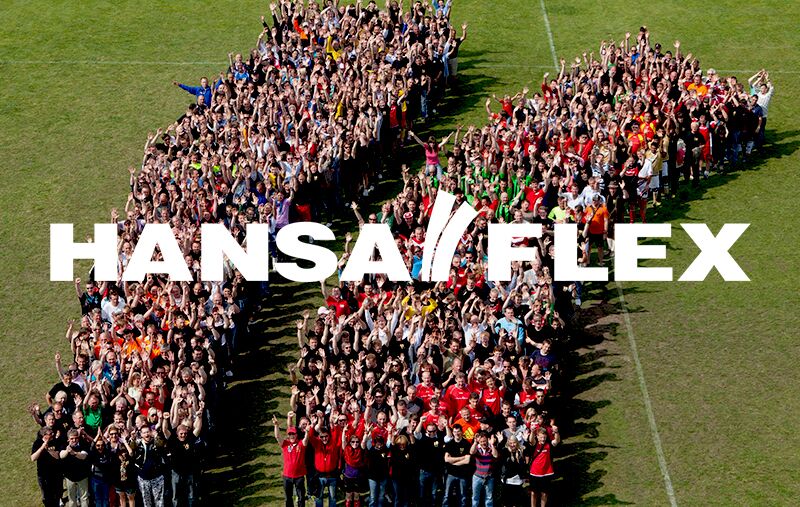SER Blog Customer Stories & Use Cases
Change management: The path to successful digitalization
| Julia Pedak
HANSA-FLEX, Europe's leading hydraulics specialist, has successfully implemented some major digital initiatives over the past decades, including invoice archiving and the recent project, a digital HR file. Many more digital processes and solutions are planned. How did HANSA-FLEX not only tackle the technical transition to a digital company, but also convince its employees to back the digitalization initiative and thus herald in a new way of working? HR Manager Nina Orywal was a leader in choosing the right approach to change management in order to achieve her company’s objectives. She shares with us here how she managed this change.

Ms. Orywal, you and your HR department are pioneers in HANSA-FLEX's digitalization. Why was the digital HR file project so important?
Our employees are a cornerstone to the success of HANSA-FLEX, which is why human resource management is so very important. Our HR department is located at our headquarters in Bremen and is responsible for the 2,000 employees in Germany. Thousands of documents are involved in the selection of applicants, the hiring process and continued training. We used to have around 2,000 paper files. You can imagine how much work that involved. We were constantly filing and searching for documents: It cost us an hour of each HR employee’s time on a daily basis. If you extrapolate that across the team, this really added up. In addition, we were no longer able to comply sufficiently on paper with legal requirements. So we had to do something. For this reason, the project had priority on our digital agenda.

From personnel file to digital company
Learn more about how HANSA-FLEX rolled out its digital HR file in just three months and marked off a key item on its digitalization agenda.
Read now
Human Resource Manager, HANSA-FLEX
A far-reaching project like this impacts many employees in the company. How did you go about rolling out the solution and getting your colleagues onboard?
From the start, we sat down with everyone involved: with IT, our data security officer, the board, and colleagues in HR. We started by asking ourselves several questions: What kind of documents are there in HR and what processes are involved? Where does our SAP system need to be integrated? Where are hard copies still circulating that need to be digitized? We reviewed the entire HR portfolio. The opinion of colleagues from HR was particularly important to us. Of course, they know much better what they work on every day, what they look for and how they search. We took this into account from the start. In this way, we were able to quickly determine what our digital HR files should be able to do so that our employees would also like working with them. With the solution package from SER, we were able to put a solution immediately into operation – a mere three months after the project was launched.
That was very fast! What impact did the new solution have on the company? How did your colleagues respond to the new way of working?
We see the results every day: We no longer need a leased archive and lead times have dropped significantly. Of course, at the end of the day, the solution was worth every cent and has a positive impact on the entire company. The transition in the HR department was easy. First, they were supportive from the start; they knew what was going to happen, and had already put a lot of effort into the project. Of course that generates buy-in. Secondly, Doxis is very intuitive. The interface is similar to MS Office and feels familiar from the outset. Our colleagues were able hit the ground running and work with it immediately. For this reason, it was easy for them to change their way of working. They are happy now every day to get digital information quickly and access documents on-the-go. The level of acceptance is really high. We were all super pleased to get a solution so quickly that we could work with live instead of just talking about it in theory. Who would have thought that one project could make such a major change possible with so little effort?
Change is a good keyword: HANSA-FLEX is planning further ECM solutions that will bring about a lot of changes. What are the next steps in your digital transformation?
We have been using the archive for a long time, particularly for SAP data archiving. Data from a range of departments are archived, for example, from procurement, production, accounting and sales. We also use the system for document management and have automated our entire mail and invoice processing operations with Doxis. These are solutions that are deployed everywhere and support processes running across the entire company. Our departments also benefit from digitalization. In the HR department, we have digitized our company’s personnel files. Our sales support office, for example, uses SER's digital contract management for their lease agreements. This solution will also be used soon for service and maintenance agreements. In the long term, we plan to expand it so that it is available to all departments. That's the beauty of Doxis: We can use it specifically for individual areas but also throughout the company, based on need. This is much easier than looking for new software every time and integrating it in a long, time-consuming process.

Speed up & streamline HR processes
This is how Doxis Human Resources helps you digitally manage all HR documents and personnel processes quickly, clearly and securely.
Read nowYou still have a lot planned. What's most important for HANSA-FLEX as it moves forward in its digital transformation journey?
In our company, the aim is for all processes to be fully integrated. For example, we want to optimize the entire process chain from customer request to quote and into production. To do so, we need a digital solution that maps all the steps in the process without breaks. What use are individual customer, supplier and material files, if each department works with them separately and doesn’t know what the other is doing? With a standardized solution, however, we can achieve end-to-end digitalization without any problems. In short, this makes work much easier for employees and enables process optimizations that allow us to be even more productive as a company. In the future, it will definitely be important for us to continue to move step-by-step in this direction.
The latest digitization trends, laws and guidelines, and helpful tips straight to your inbox: Subscribe to our newsletter.
How can we help you?
+49 (0) 30 498582-0Your message has reached us!
We appreciate your interest and will get back to you shortly.




